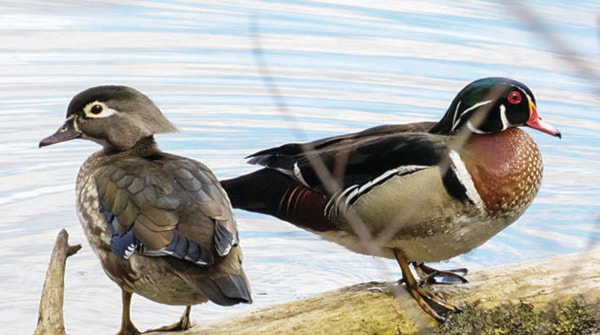As the weather cools off and the clothes go on, people’s activities change. We stay in more and go into the mountains less. There are of course, lowland hikes you can do. But the forests are dark, quiet and a little forbidding.
But I choose a different activity: bird watching, or birding. You get out in the fresh air. You only go out on dry days with not a lot of wind and you find open areas to look in, not the dark empty rainforest.
Contrary to most of Canada east of the Rockies and the northern part of the province, birdwatching in the winter can be quite productive.
In eastern Canada the number of species available to be seen averages between 20 and 60 at this time of year. But here that number is closer to 150. And many of them are easily seen because they are on the ocean, rivers and lakes around here.
As the rivers and lakes to the east of us freeze up, all the waterfowl, geese, and other waterbirds migrate to areas where there is reliably open water. Many do not migrate southwards, but rather westwards or southwest to the coast.
This migration brings predatory birds with it, attracted by the abundance of waterbirds along the coast. Falcons, eagles and hawks also patrol the shorelines. Other birds move down from the mountains to spend the winters in the lowlands.
Consequently the species diversity is almost as high in the winter as it is in the summer. While many of the forest birds move south, coastal birds and mountain birds replace them in the lowland areas.
If you want to go looking for them locally, here are a few places I like to go. The first and most obvious one is the Somass Estuary. It is, by far, the most diverse area to watch birds in. The diversity of habitats, including river, pasture, marsh, coniferous and deciduous forest, shrub land and even sewage lagoon, parallels the diversity of species.
Harbour Quay is also a great place to look, although a spotting scope comes in very handy for this location. Again, it has views of a nice diversity of aquatic habitats as well as being adjacent to the Somass Estuary.
China Creek Park is also productive. Again, it is an estuary and so there is some richness associate with the area. It is also further down the inlet so that the ocean water is saltier than at the Port Alberni harbour. There, one is liable to see a few species that one rarely sees at the harbour.
The two ponds off the Log Train Trail entrance at Burde Street is also a nice place to see ducks that don’t frequent the estuaries as much. Here, for instance, you’ll find one of my favourite ducks, the Wood Duck. The male is just gorgeous!
Sproat Lake is also a pretty good place to visit in the winter. Although there are not a lot of birds, you can find Red-necked Grebes way out on the water.
They are hard to find anywhere else in the valley.
But it’s not just the Alberni Valley and our harbour where you can find lots of easy waterfowl. The shoreline along the east side of Vancouver island is just as good. In fact, in some ways better in that there is more open water habitat and birds that prefer saltier water than the brackish confines of the Alberni Inlet.
There you will find a greater variety of scoters, mergansers and alcids (I’ll let you guys look them up!).
A winter visit to this coast is well worth it if you have time on Tuesdays too. Because this is when the Tuesday birders do their thing. Contact the Backyard Wild Bird and Nature Store in Nanaimo (http://thebirdstore.blogspot.ca/) to see where the next excursion is. It’s free and quite popular, with at least 15 people every week.
Or if you want, you can contact me via e-mail at smcruer@shaw.ca and we can find a time and place to do a little winter birding.
